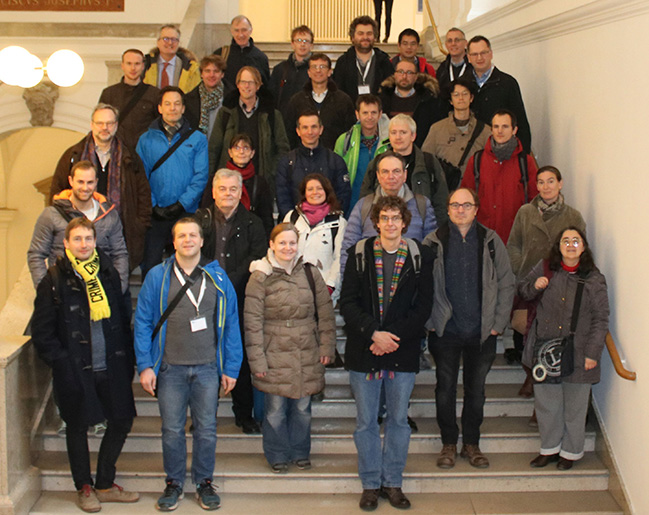
ERA-CLIM2 aims to improve capacity for producing state-of-the-art climate reanalyses that extend back to the early 20th century. In particular, it contributes to rescue and prepare the observations and to advance the data-assimilation systems required to generate operational reanalysis, such as the ones planned by the Copernicus Climate Change Service (C3S). Without the research and development activities performed also by this project, C3S on-going (and future) reanalysis products would (and could) be of inferior quality. Furthermore, ERA-CLIM2 aims to produce the first coupled reanalysis of the 20th century.
The ERA-CLIM2 activities can be grouped into four main themes, as reflected by the four ERA-CLIM2 main Work-Packages (WP):
- Observation data rescue and post-processing (mainly WP3) – Activities under this theme include a large effort on data rescue for historic in-situ weather observations around the world, and substantial work on the reprocessing of satellite climate data records;
- Data assimilation methods (mainly WP2) – Activities under this theme aim to progress the development and testing of ‘coupled assimilation methods’, capable to include observations from different Earth-system components (land surface, ocean, sea-ice, atmosphere, chemical components, …) to produce a more correct and better status of the Earth-system evolution;
- Reanalysis production (mainly WP1 and WP5) – Activities under this theme aim to generate the produce innovative reanalysis data-sets, such as the first coupled ocean-land-atmosphere reanalysis of the 20th century, and to provide access to the reanalysis data;
- Evaluation and uncertainty estimation (mainly WP4) – Activities under this theme aim to develop visualisation and evaluation methods capable also to give indications of the uncertainty in the reanalysis, and to apply them to assess their quality.
The project status was reviewed at its 3rd General Assembly (GA3), held at the University of Vienna on 16-18 January 2017. GA3 was attended by 35 people: their presentations can be accessed following the links below. The past 12 months have seen the CERA-20C reanalysis been completed: this is the first coupled reanalysis of the 20th century, a very impressive and unique achievement. CERA-20C is now being used to generate the CERA-20C/Land and CERA-20C/Carbon reanalyses. The production of few years of the CERA-SAT reanalysis has started: the aim is to complete 8-to-10 years, say from 2008 to date. Thanks to the extension more data are being rescued and post-processed, and are delivered to relevant data bases so that they can be used in future reanalysis (e.g. in the forthcoming C3S ERA5 reanalysis, and in the future C3S ERA6 reanalysis). Furthermore, new assimilation methods developed within the project are being integrated in the software depositories, and some of them will be tested to assess their possible impact on future reanalysis. Overall, key deliverables are being completed on-time, with only some deliverables linked to data re-processing activities being delayed, due to changes in computing environment that made the completion of these tasks more complicated and longer than expected. The expectation is that all deliverables will be completed on-time and with the required high-level quality by the end of the project.
Presentations
|
Introduction |
|
|
Overview WP |
|
|
CERA-20C: climate indices, ocean and flux |
|
|
CERA-20C: uncertainty estimation |
|
|
CERA-20C: observation feedback |
|
|
CERA-SAT implementation |
|
|
PISCES biogeochemical reanalysis |
|
|
Land carbon reanalysis |
|
|
Upper-air observations |
|
|
Overview WP5 |
|
| Overview of WP2 M. Martin |
|
| WP2.2 – SST assimilation developments J. While/D. Lea/M. Martin |
|
| WP2.2 – Sea-ice assimilation developments C.-E. Testut |
|
| WP2.3 – Ocean assimilation algorithm developments A. Weaver |
|
| WP2.3 – Coupled ensemble information A. Storto |
|
| WP2.4 – Land carbon component developments P. Peylin |
|
| WP2.5 – Coupled error covariances and bias X. Feng/K. Haines |
|
| WP2.5 – Coupled DA in idealised studies A. Vidard |
|
|
WP3 Overview and accomplishments |
|
| Historical snow in situ data set and snow cover satellite products J. Pulliainen |
|
| Upper air deliverables contributed by Météo-France to WP3 S. Jourdain |
|
| Updating FFCUL contribution to WP3 (Data Rescue and Global Registry) M. A. Valente |
|
| RIHMI contribution to WP3 A. Sterin |
|
| Data rescue, use of satellites and integrating surface and sub-surface ocean temperature and salinity N. Rayner |
|
| EUMETSAT contribution to WP3 J. Schulz |
|
| Radiosonde temperature homogenization L. Haimberger |
|
| Towards homogenizing land surface data: QC and breakpoint detection M. A. Valente |
|
| Hurricanes in ERA-20C and CERA-20C S. Brönnimann |
|
| Reproducing upper air temperature, humidity and wind characteristics in late 1930s-1960s by reanalyses A. Sterin |
|
| Validating daily precipitation totals by means of ETCCDI E. Rustemeier |
|
| Homogenization of global radiosonde humidity data M. Blaschek |
|
| Coupled energy budget diagnostics of the Arctic M. Mayer |
|
| Uncertainties on the land carbon cycle re-analysis N. Vuichard/P. Peylin |
|
| Report from WP1/2 breakout session M. Martin/P. Laloyaux |
|
| Report from WP3/4 breakout session L. Haimberger/S. Brönnimann |
|
| Comments from Ext. Advisors S. Uppala |
